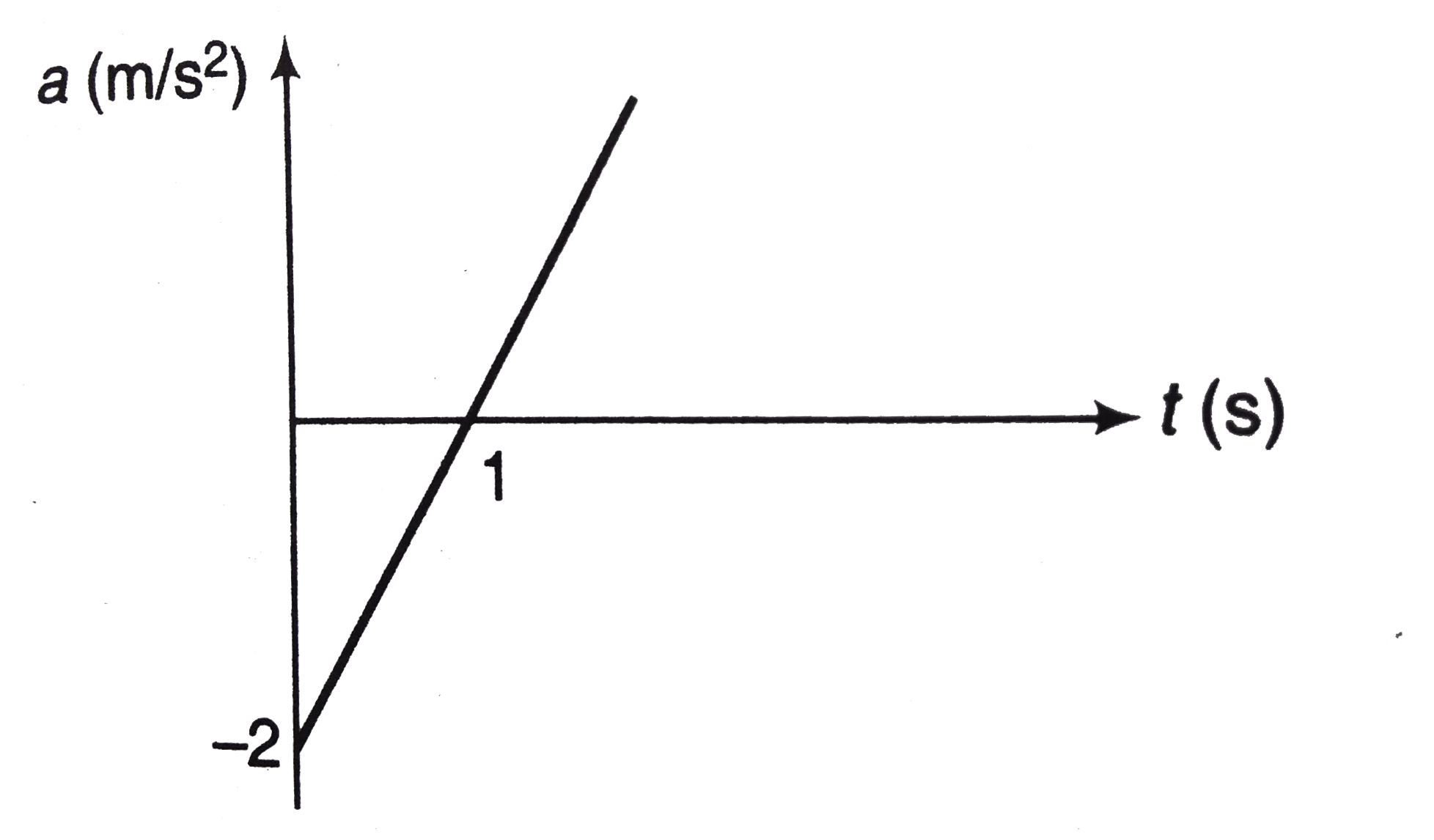A starts from rest, with uniform acceleration a. The acceleration of the body as function of time t is given by the equation a = pt, where p is a constant, then the displacement of the particle in the time interval t = 0 to t=t1 will be
12pt31
13pt21
12pt21
12pt31
The correct Answer is:D
To solve the problem step by step, we need to find the displacement of a particle that starts from rest and has an acceleration that varies with time. The acceleration is given by the equation a=pt, where p is a constant.
Step 1: Understand the relationship between acceleration, velocity, and displacement
We know that:
- Acceleration a=dvdt
- Velocity v=dxdt
Step 2: Express acceleration in terms of time
Given that a=pt, we can write:
dvdt=pt
Step 3: Integrate to find velocity
To find the velocity v, we integrate the acceleration with respect to time t:
dv=ptdt
Integrating both sides:
v=∫ptdt=p2t2+C
Since the particle starts from rest, the initial velocity v(0)=0, which means C=0. Thus, we have:
v=p2t2
Step 4: Express velocity in terms of time
Now we have the expression for velocity:
v=p2t2
Step 5: Integrate to find displacement
Next, we need to find the displacement x by integrating the velocity:
dx=vdt=p2t2dt
Integrating both sides from t=0 to t=t1:
x=∫t10p2t2dt
Calculating the integral:
x=p2⋅(t33)t10=p2⋅t313=pt316
Final Result
Thus, the displacement of the particle in the time interval from t=0 to t=t1 is:
x=pt316
---
We know that:
- Acceleration a=dvdt
- Velocity v=dxdt
Given that a=pt, we can write:
dvdt=pt
To find the velocity v, we integrate the acceleration with respect to time t:
dv=ptdt
Integrating both sides:
v=∫ptdt=p2t2+C
Since the particle starts from rest, the initial velocity v(0)=0, which means C=0. Thus, we have:
v=p2t2
Now we have the expression for velocity:
v=p2t2
Next, we need to find the displacement x by integrating the velocity:
dx=vdt=p2t2dt
Integrating both sides from t=0 to t=t1:
x=∫t10p2t2dt
Calculating the integral:
x=p2⋅(t33)t10=p2⋅t313=pt316
Thus, the displacement of the particle in the time interval from t=0 to t=t1 is:
x=pt316
Topper's Solved these Questions
- MOTION IN A PLANEBOOK - DC PANDEY ENGLISHCHAPTER - MOTION IN A PLANEEXERCISE - (B) Meical entrance special format questions (Assertion and reason)
19 Videos
- MOTION IN A PLANEBOOK - DC PANDEY ENGLISHCHAPTER - MOTION IN A PLANEEXERCISE - (B) Meical entrance special format questions (Mathch the columns)
6 Videos
- MOTION IN A PLANEBOOK - DC PANDEY ENGLISHCHAPTER - MOTION IN A PLANEEXERCISE - Check point 3.7
15 Videos
- MOTIONBOOK - DC PANDEY ENGLISHCHAPTER - MOTIONEXERCISE - Medical entrances gallery
19 Videos
- PROJECTILE MOTIONBOOK - DC PANDEY ENGLISHCHAPTER - PROJECTILE MOTIONEXERCISE - Level - 2 Subjective
10 Videos
Similar Questions
A particle start from rest, with uniform acceleration at time t, choose the correct option
View SolutionThe acceleration of particle varies with time as shown.

(a) Find an expression for velocity in terms of t.
(b) Calculate the displacement of the particle in the interval from t=2s to t=4s. Assume that v=0 at t=0.
View Solution
Knowledge Check
A body starts from rest and travels with uniform acceleration the time taken by the body to cover the whole distance is t. Then the time taken the body to cover the second half of the distance is
At√2Bt(1−1√2)Ct(1+1√2)Dt(1√2−1)
The acceleration of a particle, given by relation, a=−5ω2sin(ωt). At t=0, x=0 and v=5ω. The displacement of this paticle at time t will be
View SolutionStarting from rest, the acceleration of a particle is a=2(t-1). The velocity of the particle at t=5s is :-
View SolutionA car starts from rest and moves with uniform acceleration a on a straight road from time t=0 to t=T. After that, a constant deceleration brings it to rest. In this process the average speed of the car is
View SolutionA car starts from rest and moves with uniform acceleration a on a straight road from time t=0 to t=T. After that, a constant deceleration brings it to rest. In this process the average speed of the car is
View SolutionThe velocity of a particle are given by (4t–2) ms–1 along x–axis. Calculate the average acceleration of particle during the time interval from t = 1 to t = 2s.
View SolutionThe acceleration of a particle at time is given by A=−aω2sinωt. Its displacement at time t is
View SolutionThe position of a particle along X-axis at time t is given by x=2+t−3t2. The displacement and the distance travelled in the interval, t = 0 to t = 1 are respectively
View Solution
